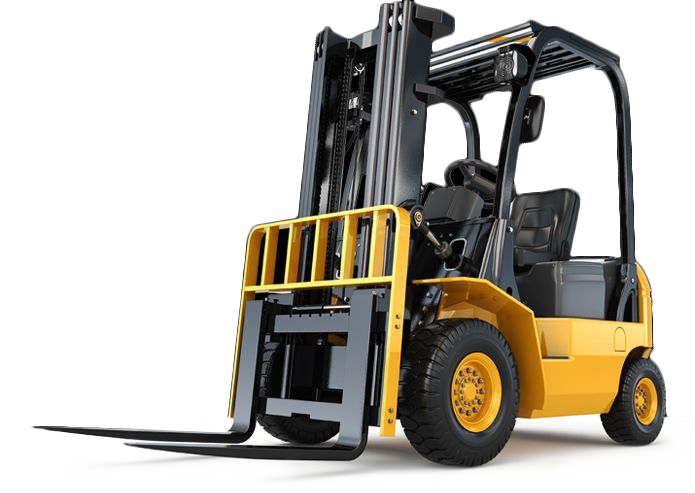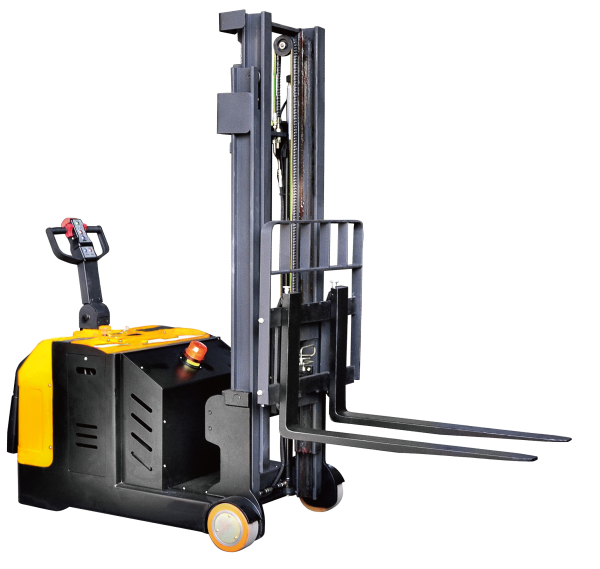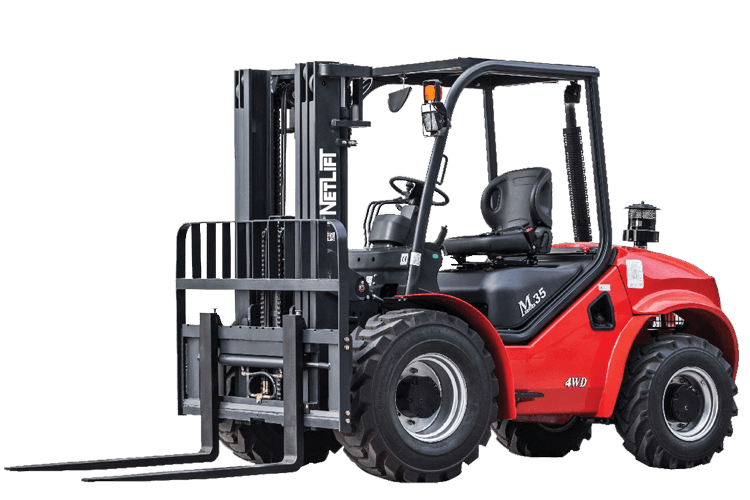Dico primis cum et, et verear aliquid equidem ius, mel no nonumes nostrum dissentiunt.
In the modern business environment, effective materials handling is critical for any organization’s success. A forklift is an essential piece of equipment that helps to speed up the process of moving, lifting, and transporting heavy objects in warehouses, distribution centers, and other industrial settings. Buying a forklift, on the other hand, may be a major expenditure, particularly for small and medium-sized businesses. Forklift financing has arisen as an appealing alternative to outright purchase, allowing businesses to acquire the equipment they require while retaining working capital. This comprehensive guide will give you specific information about forklift finance, the top three forklifts on the market, and basic information to help you make an informed decision.
How To Finance A Forklift?
Forklift financing refers to the many financial solutions offered to businesses in order to obtain forklifts without having to pay the full cost immediately. These financing alternatives often include a third-party financial institution or an equipment leasing company lending or leasing the forklift to the business for a set amount of time and payment schedule. Leasing and loans are the two most common types of forklift financing.
Leasing To Own Forklifts
Leasing is a common financing option for businesss who require a forklift for a set period of time or want to avoid the risks and responsibilities that come with ownership. The business (lessee) agrees to make monthly payments to the leasing company (lessor) for the use of the forklift over a predetermined time in a lease agreement. As the lease period expires, the company may have the choice of purchasing the forklift, extending the lease, or returning the equipment and leasing a newer model.
Forklift leases are classified into two types:
Operational Lease: The lessee does not bear the risks and rewards of ownership in an operating lease. The lease term is usually shorter than the useful life of the forklift, and the monthly payments are cheaper than with a capital lease. Operational leases are an off-balance-sheet transaction in which the lessee can deduct lease payments as operating expenditures.
Capital Lease: A capital lease is similar to a loan in that the lessee assumes the risks and rewards of ownership. The lease term typically covers the bulk of the forklift’s usable life, and the lessee may have the opportunity to purchase the equipment at the conclusion of the lease term for a small fee. Capital leases are considered on-balance-sheet transactions, and the leased forklift is recorded on the lessee’s balance sheet as both an asset and a liability.
Loans for Forklifts
A forklift loan is another type of financing in which a company borrows money from a financial institution to buy a forklift and agrees to return the loan principal plus interest over a set period of time. The company owns the forklift from the start and can deduct depreciation and interest expenses for tax purposes.
Things to Think About While Selecting Forklift Financing
Financial Targets and Goals
Businesses should assess their financial goals and objectives before deciding on a financing arrangement. Leasing may be better suited for businesss that want to conserve cash flow, avoid obsolescence, or maintain flexibility, whereas loans may be better suited for enterprises that value ownership and tax benefits.
Financial Health and Credit Score
A company’s credit score and financial health might have a big impact on its ability to get forklift financing. Better financing terms, such as cheaper interest rates and more advantageous lease terms, can be obtained with a higher credit score. Businesses with poorer credit scores, on the other hand, may face higher interest rates and less appealing leasing terms, or may be required to offer collateral to receive funding.
Loan vs. Lease Comparison
Businesses should compare lease and loan choices by factoring in monthly payments, total cost of ownership, tax consequences, and end-of-term options. Leasing typically has reduced monthly payments, whereas loans allow you to create equity in the forklift. Each financing option’s tax implications should also be considered in cooperation with a tax specialist.
Equipment Lifespan and Usage
Before deciding on a financing plan, consider the forklift’s estimated lifespan and usage. If the forklift will be heavily utilized and updated on a regular basis, leasing may be a better alternative because it allows for faster equipment updates. However, if the forklift has a lengthy useful life and will be used seldom, financing the purchase may be more cost-effective in the long term.
The Top Three Forklifts in the Market
Toyota 8FGCU25
The Toyota 8FGCU25 is a versatile and dependable internal combustion forklift with a 5,000-pound load capacity. It is powered by a fuel-efficient Toyota 4Y engine that can run on gasoline, LPG, or compressed natural gas (CNG). Toyota’s System of Active Stability (SAS) is standard on the 8FGCU25, which improves safety and productivity by automatically stabilizing the forklift during lifting and traveling tasks. The 8FGCU25 is a popular choice for a wide range of applications because to its ergonomic operator compartment, straightforward controls, and outstanding visibility.
Hyster H50FT
The Hyster H50FT is a tough and dependable internal combustion forklift with a 5,000-pound load capacity. It is powered by a strong and fuel-efficient PSI 2.4L engine that can run on LPG or dual-fuel (gasoline and LPG). The Hyster H50FT has a strong and durable frame, an innovative cooling system, and low-maintenance components, all of which contribute to its great uptime and low total cost of ownership. The H50FT is well-suited for a variety of industries and applications because to its spacious operator compartment, sensitive controls, and exceptional mobility.
Crown C-5 Series
The Crown C-5 Series is an internal combustion forklift with a load capacity ranging from 4,000 to 6,500 lbs. It is powered by a 2.4L industrial engine from John Deere Power Systems, which can be adapted to run on LPG or dual-fuel. Crown’s Intrinsic Stability System is standard on the C-5 Series, and it improves safety and performance by automatically modifying the forklift’s performance based on load, speed, and terrain conditions. The C-5 Series’ unique design, ergonomics, and modern technology make it an excellent choice for enterprises looking for a long-lasting and productive forklift.
Types of Forklifts
Forklifts come in a variety of types to suit various uses and industries. Some examples of frequent types are:

Counterbalance Forklifts: The most popular form of forklift, with a rear counterweight to offset the load being lifted. Internal combustion engines or electric motors can power counterbalance forklifts.

Reach Trucks: Designed for narrow-aisle applications, reach trucks have a pantograph mechanism that allows the forks to extend and retract, allowing the operator to reach pallets stored at higher depths in the racking system.

Order Pickers: Order pickers are machines that are specifically intended to pick individual goods from warehouse racking systems. They allow the operator to be lifted together with the forks in order to reach items at different heights.

Rough Terrain Forklifts: These forklifts are built for outdoor operation and have the ability to negotiate rough terrain, making them perfect for construction sites, lumber yards, and other difficult locations. Difficult terrain forklifts usually have diesel engines and huge pneumatic tires.
Power Sources for Forklifts
Forklifts can be powered by a variety of energy sources, such as:
Internal Combustion Engines: These forklifts are noted for their power and versatility and run on gasoline, diesel, LPG, or CNG. Internal combustion forklifts can be utilized in any weather situations and are appropriate for both indoor and outdoor applications.
Electric motors: Electric forklifts are battery-powered and environmentally clean, emitting no emissions while in operation. They are ideal for indoor applications and have lower operating expenses than internal combustion forklifts.
Fuel Cells: Hydrogen-powered fuel cell forklifts generate electricity through a chemical reaction. They emit no toxic pollutants and have quick refilling times, making them an appealing solution for high-usage applications.
Forklift Safety
Forklift safety is critical in order to avoid accidents and injuries. Some important forklift safety guidelines are as follows:
Appropriate Training
Before driving a forklift, all forklift operators must obtain extensive training and certification.
Daily Inspections
Before using the forklift, operators should do daily inspections to verify it is in good working order and to address any faults.
Load Handling
Operators must be aware of the load capacity of the forklift and never exceed it. When lifting and carrying loads, they should be appropriately distributed and secured.
Speed and Maneuvering
Forklift operators should constantly maintain a safe speed and exercise caution when turning, halting, and changing direction.
Pedestrian Safety
Operators must be mindful of pedestrians in the workplace and yield to them when appropriate, using horns or other warning devices.
Final Thoughts
Forklift financing options, such as leasing and loans, allow businesses to obtain the equipment they require while retaining operating capital. By carefully examining aspects such as financial goals, credit score, equipment usage, and longevity, businesses may make informed judgments regarding the optimal financing option for their needs. Finally, understanding the many types of forklifts, power sources, and safety rules is critical in selecting the correct equipment and keeping a safe and productive workplace.